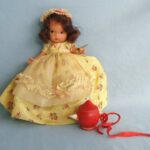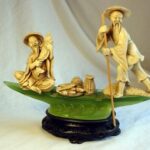Sewing machines are everywhere. They adorn shelves in WalMarts around the globe, take up sacred space in fabric stores (such as Jo Ann Fabrics), and can be found from antique stores to the internet and yard sales.
If you want a machine that will last, here are some key things to look for.
While plastic is in and everywhere, you don’t want an entirely plastic machine. The interior parts, if you want a machine that will hold up under rigors of lots of sewing, or can survive sitting for years, should be primarily metal. Some parts will be plastic no matter how high in price you’re willing to go.
All sewing machines have a belt that drives the parts. You want a machine with a thicker, more durable belt, not one with a skinny rubber band. The belts will rot if the machine sits and plastic can become brittle– so make these contents minimal.
A foot lever (the lever that raises and lowers the machine foot) should be metal also. A plastic cover is fine, just make sure that the lever itself is metal. This gets lots of use and is very important.
The bobbin area should also be all metal inside. There should only be plastic housing the bobbing parts.
Make sure the electrical cord and the cord for the foot pedal are thick and flexible. Check where they attach. It should be secure with no thin metal plates that will warp or looseness that will get worse as the machine is used, plugged in and unplugged over time.
Overall, a heavier sewing machine will have more metal parts and be more durable. A heavy machine will also be more stable and have less tendency to “walk” while you are sewing. Carefully weigh your options — do you need portability? Or will the machine be kept in one spot? Portability will require a lighter machine, one that can withstand being taken down, closed up and transported. Look for one with built in cases. Many small quilting machines come with hard cases where the case becomes part of the sewing platform. White has some very good models. But while portable and convenient, they lack in long term durability.
Low end Singers and Brother machines, like those found in department stores such as Walmart, tend to be bottom of the barrel for these manufacturers. You’ll find a predominance of plastic parts. If you don’t sew very often, or rather just mend once in a blue moon, then these models may suit you fine. They are also good for a beginner but can lead to some bad habits. A poor quality machine will not feed the fabric well and will result in the operator developing a tendency to “pull” the fabric through. Good quality machines will feed just fine without the extra help.
Quality almost entirely metal machines can be found in antique stores. There old fashioned Singers with foot pedals can be found. While quaint and an excellent conversation piece, many of these machines are lacking in working order. Unfortunately, parts are hard to find. If you can get your hands on one that works, or know someone capable of fixing them, these machines will handle most anything you want to sew. That includes leather.
If you opt for a used machine (and good ones can be found), whether you search ebay (buy from a good rated seller with a return policy in case of problems) or find a good buy at a yard sale, take the time and the money to have it professional clean and adjusted. If you don’t know where to find someone, call you local school and ask to speak with the home economics teacher. They’ll be able to refer you to someone who does quality work. And sometimes, you can get your hands on a used school machine. These machines are extremely durable.
So remember: go for more metal over plastic. Check the belt inside if at all possible. You don’t want a machine operating with the equivalent with rubberbands. Price is generally a good indicator of quality.



